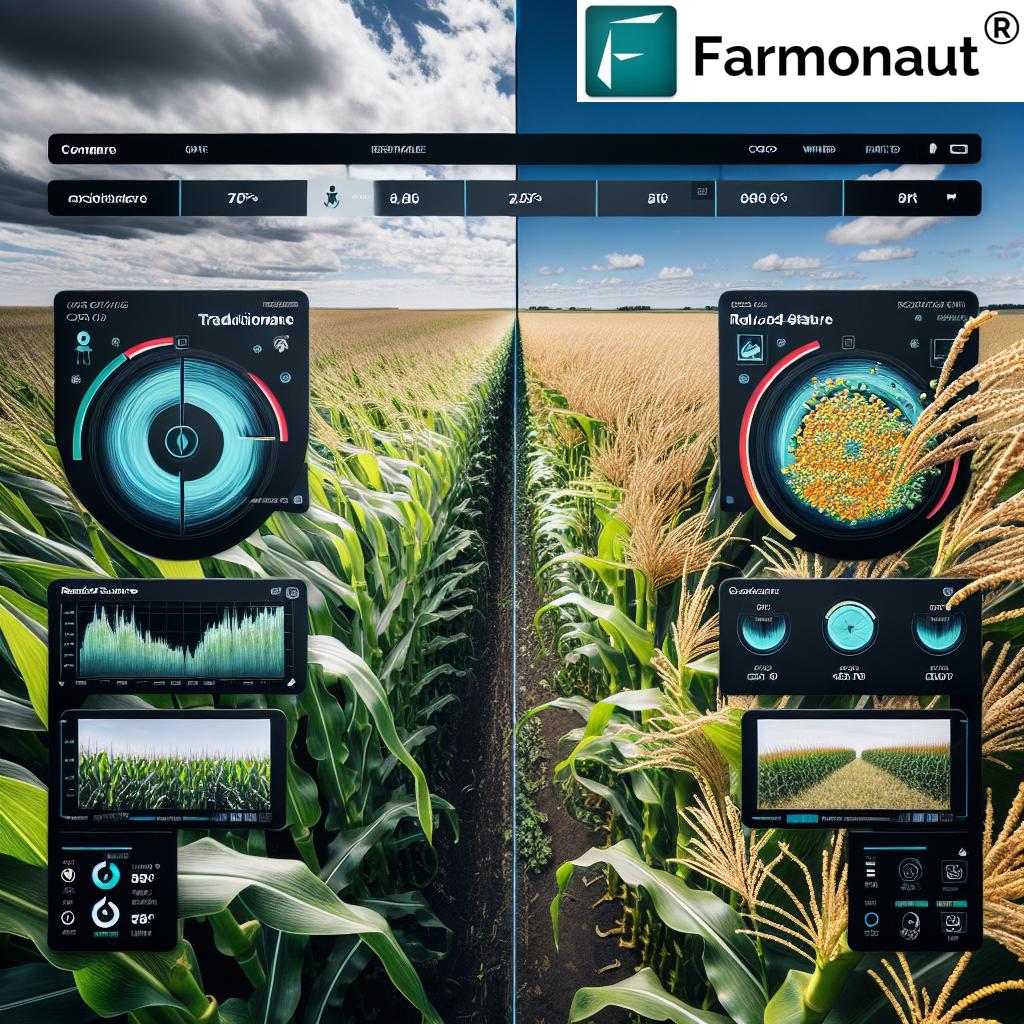Best Fire Ant Killer: Control Fire Ants & Nests 2026
Impact of Fire Ants on Agriculture & Infrastructure
Fire ants, particularly the notorious red imported fire ant (Solenopsis invicta) species, remain a significant challenge in modern agriculture and infrastructure management leading into 2026. Their presence is not only a nuisance but brings about aggressive behavior that severely impacts ecosystems, crops, and machinery. Invasive fire ants continue to damage crops, threaten farm productivity, and disrupt rural communities worldwide.
Below, let’s explore the multi-layered impact of these invasive fire ants across different sectors:
- Agriculture:
- Nests cause obstructions during planting, harvesting, and irrigation. Mounds can cover several square feet and block farm machinery, hindering daily operations.
- Fire ant stings are not just painful—they’re a health risk for workers and livestock. Severe allergic reactions sometimes require medical attention.
- Fire ants prey on pollinators and natural predators, which weakens the ecosystem’s natural pest control abilities, leading to ecological imbalances and pest outbreaks.
- Infrastructure:
- Fire ant nests can form around irrigation systems, fencing, and machinery bases, causing soil perturbation and undermining foundations.
- Colonies sometimes invade electrical equipment, leading to shorts and full-scale outages.
- Persistent nest building leads to ongoing maintenance and repair costs in rural and forestry areas.
- Livestock & Worker Health:
- Stings can immobilize animals, lower feed intake, or even cause fatalities in vulnerable livestock.
- Farm workers encounter significant risk during operations, especially when nests go undetected.
With their reproductive advantages and ability to spread rapidly across vast areas, developing effective fire ant killer strategies and technologies for 2025 and beyond is an essential priority for global agricultural sustainability and economic health.
Understanding Fire Ant Nests and Behavior
To implement effective fire ant control strategies, we must first appreciate the behavior and biology of the fire ant nest and its inhabitants. These invasive ants are masters of adaptation, able to build nests and establish colonies in diverse environmental settings such as open soil, under logs, around infrastructure bases, and even within foundations.
- Colony Structure:
- Colonies consist of numerous worker ants, multiple queens (in some cases), larvae, and pupae. Occupied nests typically have extensive tunnel networks reaching several feet deep in the soil.
- Colonies can produce reproductive queens which leave to establish new nests, sometimes spreading rapidly across square miles.
- Activity Patterns:
- Fire ants are most active in warm weather, especially during spring and summer months when food sources abound and conditions favor rapid colony growth.
- These ants forage aggressively, forming visible mounds (nests) and defending territory with their painful stings.
- Spread & Reproduction:
- Unlike some native ant species, fire ants are notorious for producing multiple queens and rapidly establishing new colonies when disturbed or as landscapes change.
- Their rapid reproduction means that missing even a few queens during treatments can result in swift colony rebound, making early detection and suppression vital.

Access advanced satellite monitoring for agriculture and fire ant control. Get Farmonaut App
Modern Fire Ant Control Methods for 2025 & 2026
Facing the challenges posed by fire ants in 2025 and 2026 requires using integrated management strategies, advanced technology, and scientifically proven fire ant killer products. Here are the core fire ant control solutions:
- Chemical Control – Fire Ant Killer & Soil Treatments
- Orthene fire ant killer (acephate) is one of the most established products for mound treatment, providing both rapid knockdown and residual action within the soil.
- Granular baits are formulated with insect attractants and slow-acting toxins. They enable foraging ants to carry insecticide deep within the nest, disrupting entire colonies.
- Bait formulations are typically scattered over large areas for maximal effect yet low risk to non-target species.
- Biological Control
- Research into biocontrol agents—like pathogenic fungi and phorid fly parasitoids—in 2026 offers further safe and targeted controls for fire ant populations.
- Biological options remain supplementary tools for integrated strategies, especially in ecologically sensitive areas.
- Cultural & Physical Management
- Mound destruction with high-pressure water, steam, or excavation is effective for small infestations or single nests.
- Maintenance practices such as reducing soil disturbance, keeping grass cover, and eliminating food sources help reduce fire ant establishment.
- Integrated Pest Management (IPM)
- Combining physical, chemical, and biological controls with regular monitoring allows for judicious use of fire ant killers, improving cost-effectiveness while minimizing environmental impact.
- Regular field scouting and detection are paramount for early intervention, especially through satellite or drone-based monitoring tools.
- Discover more on large scale farm management tools with Farmonaut – supporting field scouting and pest monitoring through satellite insights.
Comparison Table of Fire Ant Control Methods
The following table allows readers to directly compare popular fire ant killer strategies and products for 2025–2026. Each method is evaluated for effectiveness, safety, costs, and recommended application.
| Method Name | Estimated Effectiveness (%) in 2025 | Target (Nests/Individual Ants) | Application Frequency (per season) | Estimated Cost ($/acre) | Safety | Recommended For |
|---|---|---|---|---|---|---|
| Orthene Fire Ant Killer | 90–95 | Nests & Surrounding Ants | 1–2 | 20–40 | Medium | Agriculture, Commercial, Rural |
| Granular Bait (Spinosad, Hydramethylnon) | 80–90 | Nests & Foraging Ants | 2–3 | 18–30 | Medium | Home, Garden, Agriculture |
| Mound Drench (Liquid Insecticide) | 70–85 | Nests (Direct Contact) | 2–4 | 15–35 | Medium | Spot Treatments (All Settings) |
| Biological Agents (e.g., Phorid Flies) | 45–65 | Nests | 1–3 | 25–60 | High | Natural, Sensitive Areas |
| Home Remedies (Boiling Water) | 20–40 | Nests (Surface Exposure) | Multiple | 2–5 | High | Small Gardens, Limited Use |
| Integrated Pest Management (IPM) | Up to 98 | All | 1–2 w/monitoring | 20–80 | Medium–High | Agro, Home, Commercial |
Note: Effectiveness is approximate and varies by fire ant species, regional conditions, and application practices.
Orthene Fire Ant Killer: A Leading Solution for 2026
One of the most widely recognized chemical treatments in agricultural fire ant management today—and anticipated to remain a dominant fire ant killer beyond 2026—is Orthene fire ant killer. Its active ingredient, acephate, brings a unique dual-action capability for contact and systemic fire ant control.
- Quick Knockdown:
- After application, Orthene has been shown to immobilize and kill ants rapidly, especially in nest-specific treatments.
- Residual Activity:
- The product remains active in the soil for several weeks following application, reducing reinfestation rates as new ants encounter the treated nest areas.
- Versatile Applications:
- Orthene fire ant killer is well-suited for both mound treatments and area-wide foraging suppression.
- Farmers may also incorporate acephate into bait formulations for extended reach across larger fields.
- IPM Compatibility:
- When used according to safety and label recommendations, Orthene can be a pillar within Integrated Pest Management (IPM) strategies, supporting wider environmental sustainability.
Key Application Tips:
- Apply during periods of peak activity—typically warm mornings when foragers are near the surface.
- Use correct dosages to prevent residue buildup and improve health safety for beneficial soil organisms and pollinators.
- Avoid applications near water bodies to prevent environmental runoff.
- Monitor affected areas with satellite-based resource & fleet management tools from Farmonaut—track ground activity and schedule treatments efficiently.
Why Orthene Is the Best Fire Ant Killer Option in 2026:
With its superior colony eradication rates, cost-effectiveness, and safety profile when used as directed, Orthene stands out as the preferred solution for commercial, agricultural, and large-scale rural fire ant management. This is especially valuable as fire ant invasions expand in both range and frequency due to climate variability.
Integrated Fire Ant Management Strategies in Agriculture
Integrated Pest Management (IPM) is rapidly becoming the gold standard for large-scale and sustainable fire ant control in 2025, 2026, and beyond. These strategies focus on reducing pesticide reliance, improving the health of agricultural ecosystems, and leveraging advanced monitoring and technology to optimize results.
- Baiting & Targeted Chemical Use: Using slow-acting baits ensures that toxins reach deep in the nest, impacting the queen and brood, while targeted drench or mound applications (like Orthene) deliver immediate suppression.
- Biological Controls: Where possible, introducing natural predators (such as phorid flies) and entomopathogenic fungi supports self-sustaining suppression without chemical residue buildup.
- Cultural Practices: Maintaining dense plant ground cover and employing reduced tillage agriculture help prevent new nest establishment and support beneficial organisms.
- Environmental Monitoring: Early detection using satellite-based crop health and soil analysis platforms makes it easier to localize infestations and forecast risk, limiting the need for widespread chemical treatments.
- Record-Keeping and Traceability: Trace past infestations, treatments, and ecological impacts with blockchain-based traceability technology from Farmonaut, ensuring protocol compliance and building consumer trust in the agricultural products.
2026 Developments: IPM methods, amplified by satellite surveillance and AI-driven data analysis, ensure that fire ant populations are suppressed early and ecological side-effects are minimized. These integrated solutions are becoming more critical as climate and land use changes contribute to evolving pest dynamics.
Advanced Tools Supporting Fire Ant Control
Emerging technology continues to propel fire ant control strategies forward, making use of satellite data, mobile connectivity, AI, and blockchain to support farmers, land managers, and agronomists.
- Satellite-Based Monitoring: High-resolution, multispectral satellite imagery provides real-time insights into vegetation health (NDVI), soil disturbance, and the structural integrity of farm installations, supporting rapid identification of fire ant infestations.
- Jeevn AI Advisory: AI-powered, real-time alert systems (such as Jeevn AI) enable adaptive management recommendations for fire ant risks, weather forecasting, and tailored chemical application advisory.
- Blockchain Traceability & Regulatory Compliance: Technologies support in product traceability and regulatory compliance for interventions involving fire ant control, ensuring food chain transparency from farm to consumer.
- Smart Resource Management: Satellite-based fleet and equipment tracking platforms optimize the logistical aspect of pesticide application and field interventions, reducing costs and improving on-ground safety.
- Environmental Impact Monitoring: Carbon footprint analytics and real-time environmental data—including fertilizer and pesticide run-off—allow farmers to track and lower the environmental impact of fire ant nest treatments.


Get real-time satellite & AI pest control support: Farmonaut Mobile App
For developers and agritech integrators:
Seamlessly integrate satellite and weather data for pest and crop management with the Farmonaut API.
Comprehensive documentation: Farmonaut API Developer Docs.
Environmental Safety and Regulatory Compliance
Effective fire ant control must balance productivity with long-term stewardship of land and resources. Here’s what all stakeholders should focus on:
- Residue Management: Use fire ant killers like Orthene sparingly, adhering strictly to label guidance to avoid residue issues and minimize pesticide resistance.
- Pollinator & Non-Target Protection:
- Avoid treatments during bloom seasons and employ bait formulations to minimize bee and beneficial insect impact.
- Choose products with targeted action and minimal environmental persistence wherever possible.
- Records and Auditability:
- Keep careful field logs and adopt digital solutions (Farmonaut’s traceability) for proof of compliance—this is vital to meet export, organic, and domestic regulatory standards in 2026.
- Soil Health Preservation:
- Rotate management strategies between chemical, biological, and cultural practices to sustain soil microbial health and overall ecosystem viability.
In summary, sustainability and regulatory compliance are best achieved by integrating advanced monitoring, digital record-keeping, and a multi-pronged fire ant control approach in 2026 and beyond.
Farmonaut’s Role in Sustainable Agricultural Management
At Farmonaut, we are dedicated to empowering agriculture, infrastructure, mining, and ecosystem managers through accessible satellite technology geared toward advanced pest management—including effective fire ant control. Here’s how our platform supports modern agriculture and infrastructure in 2026:
- Satellite Monitoring: We provide real-time surveillance of crop health, soil condition, and fire ant nest activities using multispectral satellite imagery—helpful for early detection, damage assessment, and treatment effectiveness monitoring.
- AI-Driven Advisory: Our Jeevn AI system tailors recommendations for pest outbreaks, optimal application windows, and risk forecasting to maximize productivity and reduce unnecessary chemical use.
- Blockchain Traceability: We offer supply chain transparency by recording each intervention—from fire ant killer application to harvest—enhancing product quality assurance.
- Environmental Impact & Resource Management: Our tools support farmers in tracking and minimizing their environmental footprint, including emissions from pesticide use and resource movement logistics.
- Scalable Solutions: From smallholder farmers to large agribusinesses and government agencies, our modular subscriptions and open APIs make advanced monitoring accessible everywhere, every time.
To learn more about strengthening your operation with satellite-driven insights and regulatory-compliant fire ant management, explore our:
- Crop Loan and Insurance Solutions – Secure funding for pest management with transparent, satellite-validated claims.
- Crop Plantation & Forest Advisory Services – Get expert insights for integrated fire ant and pest strategies in woodlands and plantations.
For app/web access and subscriptions: Farmonaut Platform
Frequently Asked Questions (FAQs)
Q1: What makes Orthene fire ant killer the best fire ant control solution in 2026?
Orthene, based on acephate, offers rapid knockdown and substantial residual activity in soil, wiping out fire ant colonies at the nest and protecting against reinfestation. Its versatility and compatibility with integrated pest management ensures high effectiveness for both large-scale and targeted treatments.
Q2: How can I minimize environmental impact while using chemical fire ant killers?
Use baits and spot treatments instead of broadcast applications, apply chemicals per label instructions, avoid treatments near water sources, and combine chemical methods with biological or cultural strategies for overall impact reduction.
Q3: Are biological methods alone sufficient for fire ant control in agriculture?
Biological tools, including parasites and fungi, are valuable for sensitive sites or as part of an integrated strategy, but they may not provide rapid suppression during outbreaks. Combining biological, chemical (like Orthene), and cultural controls gives the most reliable results in 2026.
Q4: What’s the best time of year to treat fire ant nests for maximum effectiveness?
Treat during warm, dry periods—typically spring and early summer—when foragers are most active and close to the soil surface. Early intervention supports more complete colony elimination.
Q5: Can satellite technology help with fire ant management planning?
Absolutely. Modern satellite platforms such as the Farmonaut app allow for real-time mapping of nest activity, monitoring of vegetation and soil health, and precision planning for treatments—saving labor and materials.
Q6: Where can I access more resources or advanced pest management tools?
Farmonaut offers subscription-based access to spatial analytics, resource management, carbon footprint monitoring, and more—visit our platform and API documentation for deeper integration.
Summary and Look Ahead
Fire ants—especially the red imported fire ant (Solenopsis invicta)—will continue to threaten agriculture, infrastructure, and ecological balance in 2026 and beyond. Their persistent nests, aggressive stings, and ability to disrupt farming operations underscore the urgent need for reliable fire ant killer solutions.
Orthene fire ant killer stands out as the best fire ant killer for commercial and agricultural use, delivering rapid colony collapse and long-lasting suppression when combined with baiting and other integrated fire ant management strategies. The future of fire ant control is undeniably data-driven, with Farmonaut and similar satellite technology providers offering the actionable insights farmers, rural managers, and ecosystem stewards need to adapt to these evolving pest threats.
Key Takeaways for 2026:
- Deploy Orthene and other fire ant killers as part of an integrated, environmentally conscious program.
- Leverage real-time satellite and AI surveillance for early nest detection and targeted interventions.
- Preserve ecosystem balance by rotating between chemical, biological, and cultural controls.
- Maintain regulatory compliance and market trust with digital traceability solutions.
- Use scalable, affordable solutions like Farmonaut to empower your team—no matter your operation’s size.
Take action today: Connect with Farmonaut’s advanced monitoring, advisory, and record-keeping tools for optimized pest management.

Explore Farmonaut’s App for satellite-powered solutions today.
For further information on sustainable, technology-driven agriculture and pest control, follow our platform and stay updated on the latest research, field protocols, and digital innovations—empowering your productivity, safety, and environmental stewardship in 2026 and into the future.










